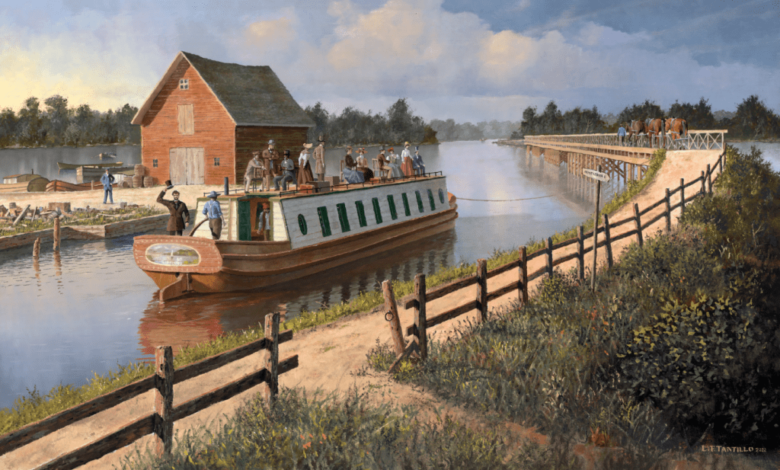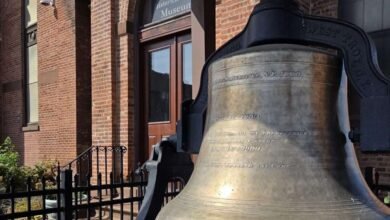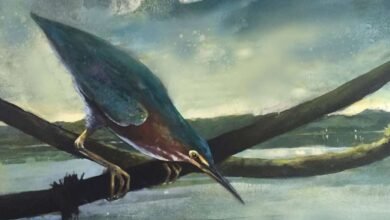Martin’s Journey, Erie Canal at the Seneca River, 1848


 New York State has always been a gateway for immigrants, but the Erie Canal carried more westbound immigrants than any other trans-Appalachian canal. These new Americans brought different languages, customs, practices, and religions.
New York State has always been a gateway for immigrants, but the Erie Canal carried more westbound immigrants than any other trans-Appalachian canal. These new Americans brought different languages, customs, practices, and religions.
The commissioned painting above depicts the travels of a 19th century immigrant on his journey from Albany to Buffalo on the Erie Canal. The scene is set at the unusual location near the town of Montezuma, in Cayuga County, New York, where the Erie Canal and the Seneca River intersect at the same elevation. An 800-foot-long wooden bridge was constructed, diagonally across the river to accommodate the three-horse teams towing barges.
The passenger packet, with its many travelers, represents a specific vessel whose name has been lost over time. Its remains were discovered in 2019 in the deep cold waters of Seneca Lake. It is identified only as “Target 7.”
The decorative oval windows are still visible on the wreck which lies right-side-up on the lake bottom. It is believed to be the first wreck of an early canal passenger packet ever found. It was nearly 100 feet in length.
Read more about the Erie Canal.
A version of this essay by artist L.F. Tantillo was first published in the newsletter of the American Society of Marine Artists. It’s provided here in support of the Albany Waterway project, which hopes to reconnect Albany with the Erie Canal and Hudson River.
Illustration: Len F. Tantillo, “Martin’s Journey, Erie Canal at the Seneca River, 1848,” oil on canvas, 20 x 32 inches, 2022.
Source link




